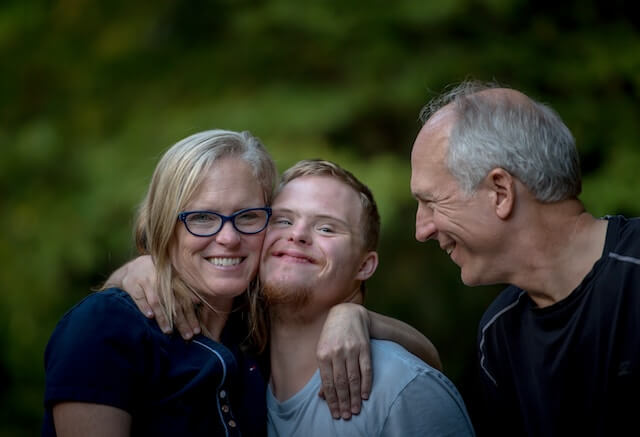Autism, or Autism Spectrum Disorder (ASD), is a complex developmental condition that involves persistent challenges in social interaction, speech, and nonverbal communication. Every child on the autism spectrum has unique strengths and challenges. Therefore, there is no one-size-fits-all approach when your autistic child when it comes to therapy. Instead, a multi-therapy approach can often yield the most effective results. Here are some of the most common therapies used in the treatment of autism and how they can benefit your child.

Why is therapy important for children with autism?
Therapy plays a pivotal role in supporting children with autism spectrum disorder by addressing their individual challenges and harnessing their unique capabilities. It fosters essential skills such as communication, and social skills and interaction, and self-care, which can significantly enhance their quality of life. Furthermore, these therapies can help reduce problematic behaviors and improve independence, thereby assisting in integration into social and educational settings. Due to the spectrum nature of autism, different therapies can be tailored to meet the unique needs of each child, ensuring that they receive the most effective and personalized support possible.
Speech and Language Therapy
Children with autism often struggle with language and communication. Speech and Language Therapy can help improve their verbal, nonverbal, and social communication skills. This may include learning to use gestures, improving articulation, or understanding and using language effectively in conversation. Speech and Language Therapy can also aid in developing social skills, including how to initiate conversations, maintain eye contact, and understand nonverbal cues.
Occupational Therapy
Occupational therapy aims to improve everyday skills which allow the child to function more independently and effectively in their physical and social environment. This could include self-care skills like dressing, eating, and toilet training, along with play and socialization skills. Occupational therapists work with children to develop sensory integration, coordination, and motor skills that are essential for daily activities.
Physical Therapy
This type of therapy focuses on motor skills like walking, sitting, or coordination. It helps children with autism improve their physical skills, balance, strength, and coordination, which can lead to increased participation in school and community activities. Physical therapy can also address any physical challenges, such as difficulty with fine motor skills, that may be impacting a child’s ability to engage in daily activities.

Cognitive Behavioral Therapy
Cognitive Behavioral Therapy (CBT) is a form of psychological treatment that can be highly beneficial for children with autism spectrum disorder, particularly those who are high-functioning and have good verbal skills. CBT aims to address negative thinking patterns and maladaptive behaviors by teaching children the connections between thoughts, feelings, and behaviors. Children learn to identify and challenge their distorted thoughts or beliefs, thereby changing their reaction to stressful situations. This form of therapy can be particularly effective for managing anxiety, anger, or obsessive-compulsive behaviors often associated with autism. CBT encourages a problem-solving approach to the challenges these children may face, fostering resilience and the ability to adapt to change.
Sensory Integration Therapy
Children with autism often have difficulty processing sensory information like sounds, touch, or movement. Sensory integration therapy can help them respond to these sensory stimuli and information in a more appropriate way, helping them to interact with their environment more effectively.
Play Therapy
Play therapy offers a unique approach for teaching children with autism to express their experiences and feelings through a natural, self-guided, self-healing process. As children’s experiences and knowledge are often communicated through play, it becomes an important vehicle for them to know and accept themselves and others. This type of therapy is structured around the child’s interests, which encourages engagement and active participation in the process. It helps in developing social skills, emotional regulation, and cognitive function. It can also foster self-esteem and create opportunities for developing interpersonal skills. Play therapy is often perceived as more enjoyable than other therapeutic approaches, reducing resistance and building a positive association with the therapy process.

Horse Therapy
Also known as Equine-Assisted Therapy, horse therapy involves interaction between a child with autism and a horse. It is a unique form of therapy that promotes emotional growth and learning. The rhythmic and repetitive motion of riding a horse can help improve the child’s motor coordination, balance, and core strength. Moreover, caring for the horse can teach responsibility, empathy, and improve social and communication skills. The bond that develops between the child and the horse can also have a profound impact on the child’s mental health, self-esteem and confidence. Always conducted with the supervision of a professional therapist, horse therapy provides a supportive, non-judgmental environment where children with autism spectrum disorder can thrive emotionally and physically.
Applied Behavior Analysis (ABA) Therapy
ABA therapy is a widely recognized treatment for autism, with educational approaches aiming to improve specific behaviors and skills in children with ASD. The approach uses positive reinforcement to encourage desirable behaviors and reduce harmful ones. ABA is highly customizable, enabling therapists to tailor the therapy sessions according to the needs and progress of each child. This therapy can be particularly beneficial disorder in enhancing life skills such as following instructions, interacting with others, and understanding emotions. By encouraging positive behavioral changes, ABA can greatly contribute to a child’s ability to function more effectively in different environments, including home, school, and community settings.

The Benefits of a Multi-Therapy Approach
Each therapy addresses different aspects of a child’s development, and using them in combination can provide a comprehensive approach to treatment. For example, while physical therapy might help a child participate in play activities, occupational therapy can help them improve the skills needed to engage in these activities, such as coordination or attention. Similarly, behavioral therapy can complement speech and language therapy with social interactions by helping children use their new communication skills in various social situations.
In conclusion, a multi-therapy approach can be highly beneficial for children with autism. It allows for a more personalized and comprehensive treatment plan that addresses the unique needs and strengths of each child. If you believe your child could benefit from these therapies, it’s important to consult with a healthcare provider who can guide you through the process of selecting the right combination of therapies for your child.
Additionally, for families and individuals in Macon, Georgia seeking such comprehensive support, exploring the available Autism Resources in the area is crucial. These resources may include therapy centers, support groups, educational programs, and community organizations tailored to the specific needs of the Macon community, offering invaluable assistance in navigating the journey of autism.
If you are ready to work with the best Applied Behavior Analysis therapy provider in Texas or Georgia, give us a call at (404) 487-6005. Our dedicated team is ready to help, and we will treat you like family.
When it comes to supporting your child with autism, professional medical advice is key. Before starting any therapy or treatment plan, please consult with a healthcare provider who knows your child’s unique needs and circumstances. Every child is different and what works for one may not work for another. A healthcare professional can guide you in choosing the right path for your child’s development and wellbeing































